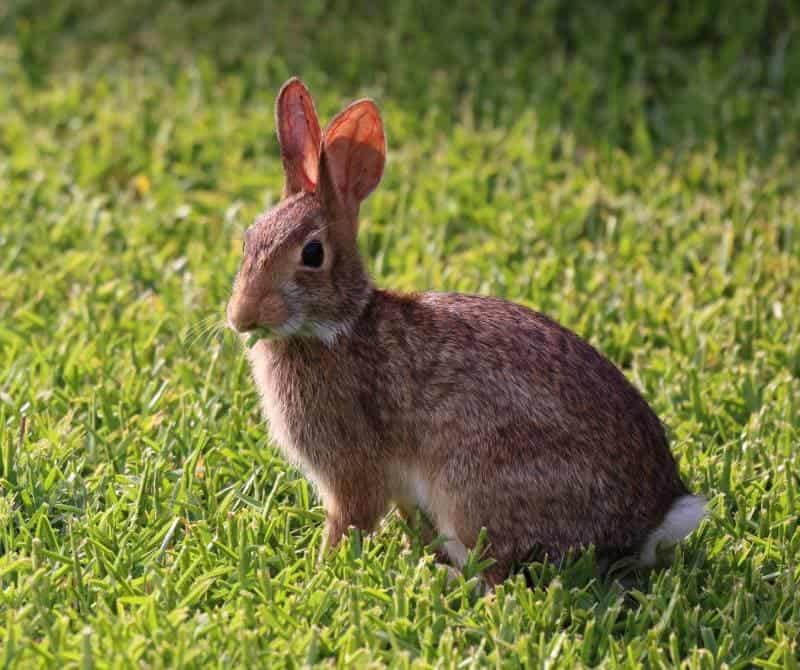Rabbits are often portrayed as cute and cuddly creatures that are perfect for snuggling up with. But there’s more to these hopping creatures than just their adorableness, especially when it comes to Cottontail rabbits. These unassuming bunnies actually have a rich history and unique set of requirements that make them fascinating to study and care for.
| Size: | Average |
| Weight: | Up 1.6–2.9 pounds |
| Lifespan: | 11 months to 3 years |
| Similar Breeds: | Netherland Dwarf, Jersey Wooly, Dutch Rabbit, Holland Lop |
| Suitable for: | Single homes or families looking for active pets that are small and high energy. |
| Temperament: | Spunky, friendly, adaptable |
The Cottontail is actually known for its high energy. These rabbits have had a significant impact on human culture and society. They’ve been hunted for food and sport for centuries and are a popular game animal in many parts of the world. They have also been used in scientific research to study a variety of topics, including genetics, physiology, and behavior.
Cottontail Rabbit Breed Characteristics
[yasr_multiset setid=7]

How Much Do These Rabbits Cost?
The cost of a Cottontail can vary depending on several factors such as the age, breed, and location of the seller. On average, a Cottontail rabbit can cost anywhere from $30 to $100. And let’s not forget about the ongoing costs of owning a pet, including housing, food, vet care, toys, and entertainment.
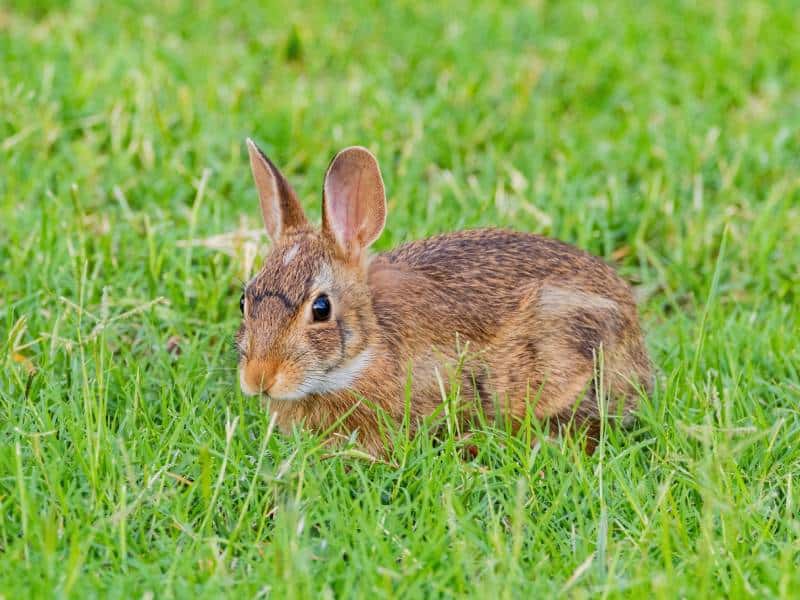
Temperament & Intelligence of the Cottontail Rabbit
These rabbits tend to be non-aggressive and are very physically active. They’re typically not aggressive towards humans or other animals and are often kept as pets for their gentle nature. However, they can become scared or agitated if they feel threatened or cornered, which can result in biting or scratching. So, to say, it’s important to handle them gently and provide them with a safe and secure environment.
In terms of intelligence, the Cottontail rabbit isn’t really considered to be highly intelligent compared to other domesticated animals like dogs or cats. However, they are capable of basic problem-solving and can learn simple tricks with proper training. These rabbits do have a good memory and can recognize their owners, as well as familiar objects and locations. They also have a keen sense of smell and hearing, which helps them navigate their surroundings and detect potential predators. So, while the Cottontail rabbit may not be the smartest animal, they’re certainly not lacking in charm and personality.
Do These Rabbits Make Good Pets?
Well…not necessarily, but they can be. In general, Cottontail rabbits don’t always make good pets. This is because they’re wild animals and aren’t really domesticated like cats and dogs are. They have specific needs and behaviors that can be difficult to accommodate in a domestic environment.
Cottontail rabbits are also known for being skittish and easily frightened (unlike other rabbit breeds), which can make them difficult to handle. They may become stressed in a new environment or with new people, which can lead to health problems. Additionally, rabbits have a complex digestive system that requires a specific diet and care regimen, which may be challenging for a first-time rabbit owner.
However, they can be trained when they’re young and can be taught to be more comfortable around humans and other domesticated animals.
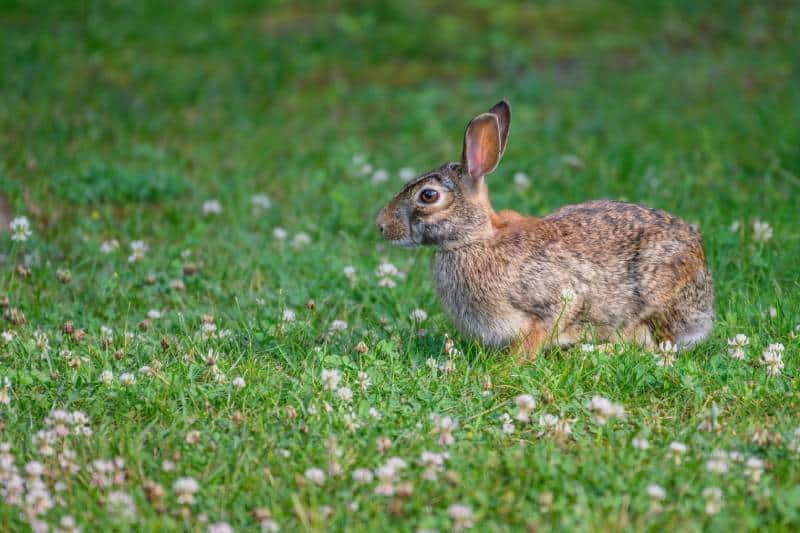
Does This Rabbit Get Along With Other Pets?
It depends. When it comes to their compatibility with other pets, there are certain factors that need to be considered. While cottontail rabbits can be social animals, their compatibility with other pets depends on various factors like the temperament of both animals, their size, and their individual behavior.
In general, Cottontail rabbits can get along well with other pets like cats and dogs if they’re introduced to each other at a young age. However, it’s best to supervise their interactions in the initial stages to avoid any unwanted confrontations. It’s also crucial to ensure that the other pets don’t harm or scare the Cottontail, as this can cause them to become aggressive or anxious.
And if you have other small pets like hamsters or guinea pigs, it’s best to keep them separate from the rabbit. Hamsters are a tad territorial and can view the rabbit (this larger, hopping animal) as a threat and trouble may arise. Similarly, if you have birds or reptiles as pets, try to keep them away from the rabbit’s reach.
 Things to Know When Owning a Cottontail Rabbit:
Things to Know When Owning a Cottontail Rabbit:
Food & Diet Requirements
Cottontail rabbits are herbivorous, so this means that they feed on a variety of plant materials, including grasses, herbs, bark, and twigs. So, when you own them, it’s important to provide them with a diet that’s similar to their natural diet in order to ensure that they receive all of the nutrients they need to stay healthy.
A good diet for a cottontail rabbit should consist primarily of hay and fresh vegetables. Good options include orchard grass hay, oat hay, and meadow hay. In addition to hay, rabbits should be given fresh vegetables on a daily basis. Some good options include carrots (cue the cliché), kale, parsley, dandelion greens, and romaine lettuce.
It’s also important to provide your rabbit with fresh water at all times. A clean water bottle or bowl should be provided and refreshed daily. If you’re feeding your rabbit a commercial pellet diet, make sure that it’s high-quality and free from any fillers or artificial additives.
Habitat & Hutch Requirements
Cottontail rabbits require a spacious and safe habitat that allows them to roam freely. Since rabbits aren’t that big, a habitat that’s about 25 to 40 inches long, 20 inches in width, and about 20 to 30 inches in height is ideal. You can find these habitats online in stores like Chewy or Petco for about $40 to $75, depending on the size. They are usually made of wire mesh or metal, which makes them easy to clean and maintain.
The flooring of the habitat should be made of solid material to prevent injury to the rabbit’s delicate feet. And it should also have enough space for a nest box, food, water, and a litter box.
Now the actual hutch is an essential component of the rabbit’s habitat. It provides a safe and secure place for the rabbit to sleep and rest. Also be big enough for the rabbit to hop around and move around comfortably. The hutch should also have a door that can be securely locked to prevent predators from entering.
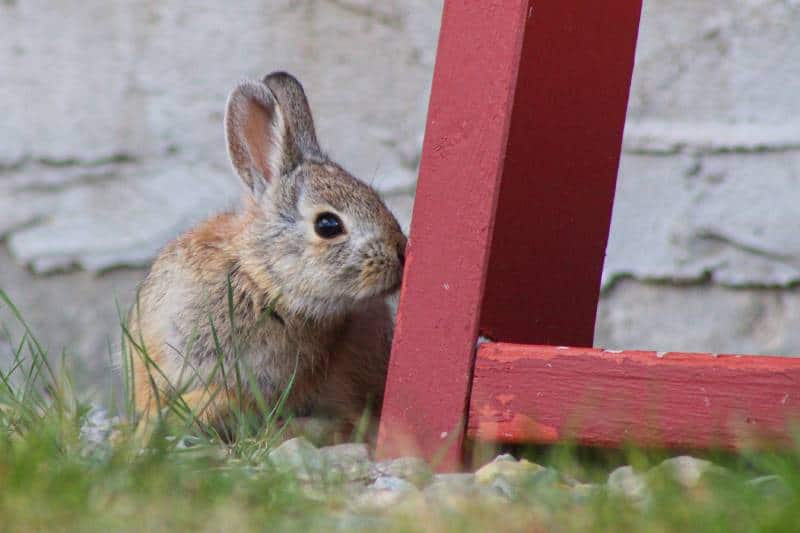
Exercise & Sleeping Needs
Cottontail rabbits are active, playful creatures that require a certain level of exercise to maintain their health and wellbeing. But the amount of exercise needed for cottontail rabbits can vary depending on a few factors, such as age, weight, and physical condition. While there’s really no hard and fast rule regarding the amount of exercise required for these animals, there are some general guidelines that can be followed to ensure that they get the activity they need.
One of the best ways to ensure that cottontail rabbits get enough exercise is to provide them with ample space to move around freely (which means a sizable habitat). A good rule of thumb is to provide at least 8 square feet of space per rabbit. This can be accomplished by setting up an indoor or outdoor playpen or enclosure that allows them to move around, play, and explore. It’s important to ensure that the enclosure is safe and secure, with no sharp edges or dangerous items that could harm the rabbits.
Another way to encourage exercise in cottontail rabbits is to provide toys and activities that engage their natural instincts. This can include things like tunnels, chew toys, and puzzle feeders. Rabbits in general love to explore and forage, so providing them with opportunities to do so can help keep them active and engaged.
And finally, it’s important to provide regular opportunities for supervised exercise outside of the enclosure. This can include supervised playtime in a secure, bunny-proofed room or outdoor area. It’s important to supervise the rabbits during these times to ensure their safety and prevent any potential accidents.
As far as sleeping is concerned, Cottontail rabbits actually have rather unique sleeping patterns that allow them to stay alert and avoid predators. They sleep with their eyes open and ears erect, which helps them detect any potential danger. This sleeping position is known as “resting alertness” and is common among many prey species. They also take short naps during the day, which allows them to conserve energy and remain alert when necessary.
Training
So, can this rabbit breed be trained? The answer is yes, to some extent. While they may not be as trainable as dogs or cats, cottontail rabbits can learn a few tricks with patience and persistence.

“Come” Command
One of the primary things that cottontail rabbits can be trained to do is to come when called. This is especially useful for pet owners who occasionally like to let their rabbits roam free in their yards. By using positive reinforcement techniques, such as giving treats or praise, you can teach your rabbit to come when you call its name. However, it’s important to note that these rabbits are prey animals by nature and can become easily frightened. So, it’s essential to take things slow and not push them too hard.
Litter Box
You can also train cottontail rabbits to use a litter box. Much like cats, rabbits have a natural instinct to use a specific spot for their waste. By providing a litter box and placing your rabbit in it after meals or naps, you can teach it to use the designated area for its bathroom needs. This not only makes cleaning up after your rabbit easier but also helps keep your home sanitary.
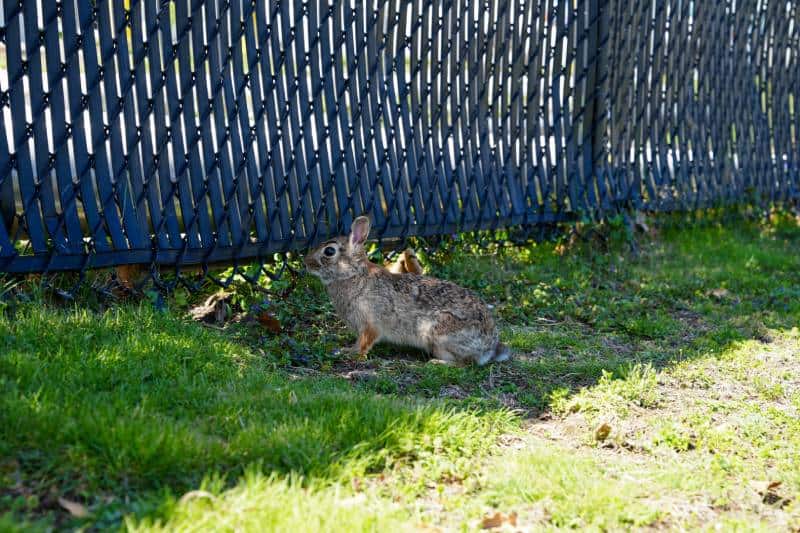
Leash Walking
Also, some cottontail rabbits can even be taught to walk on a leash – it should be noted that this will take a bit of training, because after all this breed isn’t the most trainable. This may seem like an odd sight, but it’s entirely possible with proper training. By using a harness designed for rabbits and starting with short walks around the house or yard, you can gradually get your rabbit used to being on a leash. However, it’s essential to monitor your rabbit’s behavior and never force it into anything it doesn’t want to do.
Grooming✂️
You should groom your Cottontail rabbit regularly to keep it healthy and happy. Grooming for this breed involves brushing its fur, trimming its nails, and cleaning its ears. You’ll want to brush the rabbit’s fur regularly to help remove loose hair and prevent mats from forming. Mats can be painful for rabbits and can even lead to skin infections. Brushing once a week should suffice for these rabbits.
Trimming your rabbit’s nails is also important to prevent them from growing too long and causing discomfort or even injury. On average, you may need to trim your rabbit’s nails about every 2 to 4 weeks. You can also take your rabbit to a professional groomer to have them trimmed as well – as these rabbits can be a bit hard to tie down to get the job done.
And cleaning your rabbit’s ears is another important part of grooming. The Cottontail’s ears are prone to wax buildup, which can lead to infections if not cleaned regularly. Use a gentle ear cleaner and cotton balls to gently clean your rabbit’s ears about once per week.
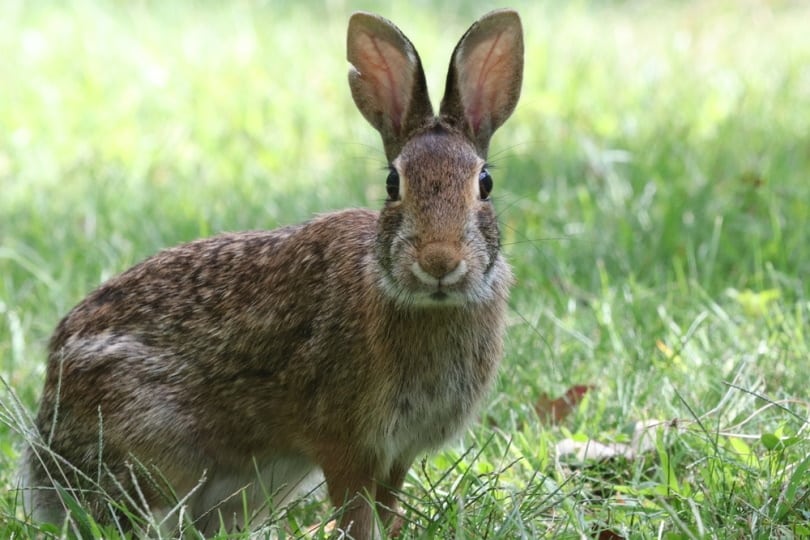
Lifespan and Health Conditions
- Parasites
- Dental issues
- Respiratory problems
- Diarrhea
- Skin problems
Parasites
One of the most common health concerns for Cottontail rabbits is parasitic infections. These can range from fleas and ticks to more serious infections such as coccidia or worms. These parasites can cause a variety of issues including itching, hair loss, lethargy, and even anemia. To prevent parasitic infections, it’s best to keep your bunny’s living space clean and free of debris, and to regularly inspect the Cottontail for any signs of an infestation.

Dental Issues
Another serious condition that can affect Cottontail rabbits is dental disease. These animals have continuously growing teeth which require constant wear down through chewing. If the rabbit’s diet doesn’t provide enough roughage to accomplish this, their teeth can become overgrown or misaligned, leading to painful abscesses or even difficulty eating. To prevent dental disease, be sure that you’re always providing a diet high in fiber and roughage, like hay or fresh greens.
Respiratory Problems
Cottontail rabbits are also at risk for a variety of respiratory illnesses – something common with many rabbits, actually. These can be caused by viral or bacterial infections, as well as exposure to irritants such as cigarette smoke or dusty environments. Signs of respiratory illness in rabbits may include coughing, sneezing, nasal discharge, and difficulty breathing. To prevent these conditions, keep the rabbit’s living space clean and well-ventilated, and avoid exposing them to any irritants or pollutants.
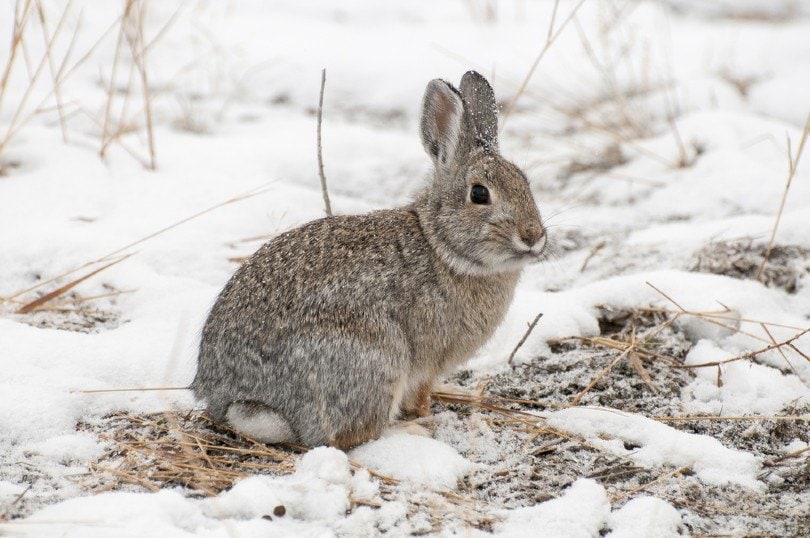
Diarrhea
One of the most common minor conditions affecting cottontail rabbits is diarrhea. This can be caused by a variety of factors, including a poor diet, stress, or infections. Signs of diarrhea in rabbits include loose or watery stools, lethargy, and loss of appetite. In mild cases, the condition can usually be treated by improving the rabbit’s diet and ensuring that it has access to clean water. In more severe cases, veterinary treatment may be necessary.
Skin Problems
Cottontail rabbits can also suffer from skin problems such as mites or fungal infections. Signs of skin problems in rabbits include itching, hair loss, and scabs or lesions on the skin. But these conditions can easily be treated by a veterinarian with medication such as antifungal creams or anti-parasitic medication.
Male vs. Female
Like many mammals, one of the most noticeable differences between male and female Cottontail rabbits is their size. Typically, female Cottontails are slightly larger than the males – though you typically wouldn’t notice this by just looking at them, you’d have to check their genitals to tell them apart.
The reproductive systems of male and female Cottontail rabbits differ significantly. Male cottontails have testes that are located outside of the body, which allows them to regulate their body temperature for optimal sperm production. Female Cottontails have a uterus and ovaries that are located internally. Females have the ability to reproduce throughout the year and can have several litters of offspring each year.
Another difference between male and female Cottontail rabbits is their behavior. Males tend to make better domesticated pets than females. They typically show fewer aggressive tendencies than female rabbits, which may be surprising to many. Females, on the other hand, tend to be more social and may live in groups with other females and their offspring.
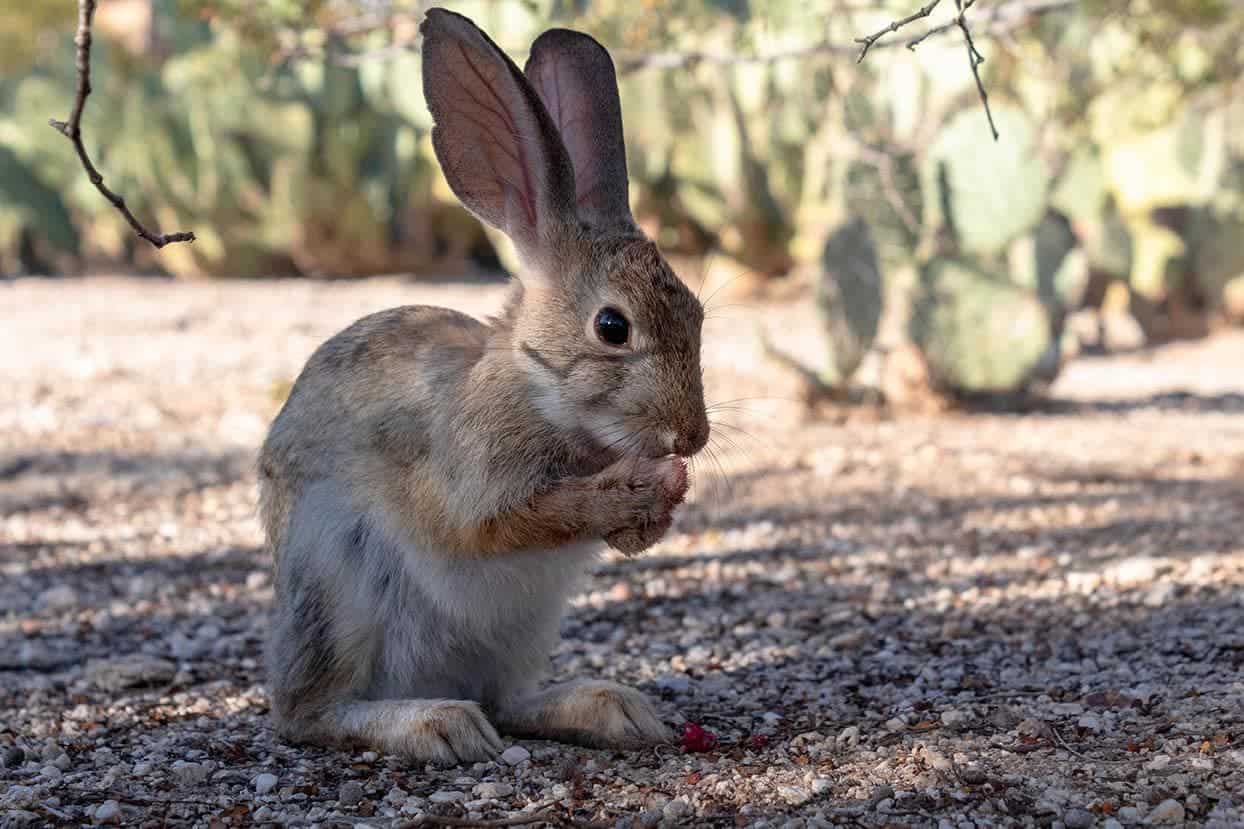

3 Little-Known Facts About Cottontail Rabbits
1. They don’t live long
Cottontail rabbits have a relatively short life span, usually living only 2–3 years in the wild. They reach sexual maturity at around 3–4 months of age and can have multiple litters per year.
2. They’re born blind
Female cottontail rabbits give birth to litters of 3–8 kittens, which are born blind and hairless. The mothmr rabbit will nurse her kits for around 3 weeks before they are able to survive on their own. The kittens will stay with their mother for several more weeks before they are fully weaned.
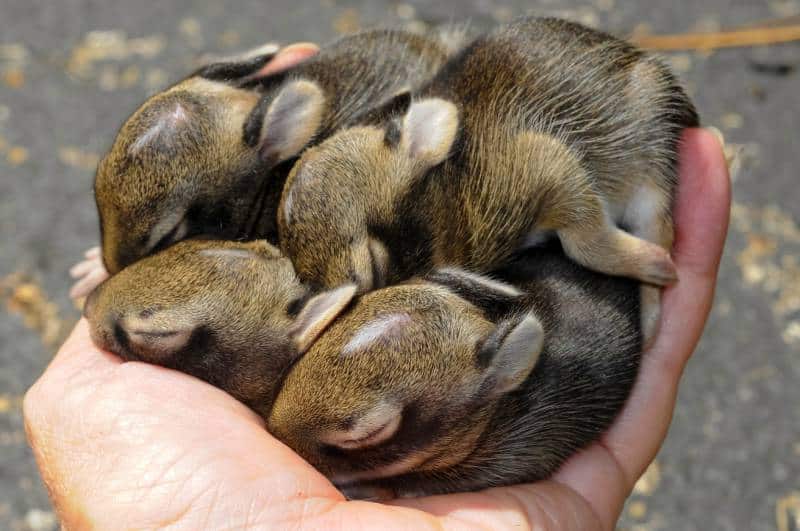
3. They can run up to 18 miles per hour
This makes them one of the fastest animals in their size category. This incredible speed is due to the rabbit’s powerful hind legs, which are designed for quick bursts of acceleration and sudden changes in direction. Additionally, these cute little bunnies are able to jump up to 15 feet in a single bound, further adding to their impressive mobility.

Final Thoughts
Cottontail rabbits are gorgeous animals with a rich history and can be relatively easy to care for. However, it helps to know that while these rabbits are active, they may be more difficult to train and challenging to understand as domesticated animals.
If you’re considering getting a pet rabbit, it’s important to do your research to determine the best fit for your lifestyle and home environment. Cottontail rabbits are a popular choice among pet owners due to their cute and cuddly appearance. Cottontails have different needs and behaviors than domesticated rabbits, which can make them more challenging to care for as pets. For example, they have a natural instinct to chew and dig, which can lead to damage in your home. In addition, cottontails aren’t typically socialized with humans and may have a harder time adjusting to life as a pet.
If you’re set on getting a Cottontail rabbit as a pet, it’s important to find a reputable breeder who specializes in domesticating wild rabbits.
Related Reads:
- Jackrabbit vs Cottontail: What’s the Difference? (With Pictures)
- Desert Cottontail Rabbit: Facts, Origin & History (With Pictures)
Featured Image Credit: Anne Katherine Jones, Shutterstock
